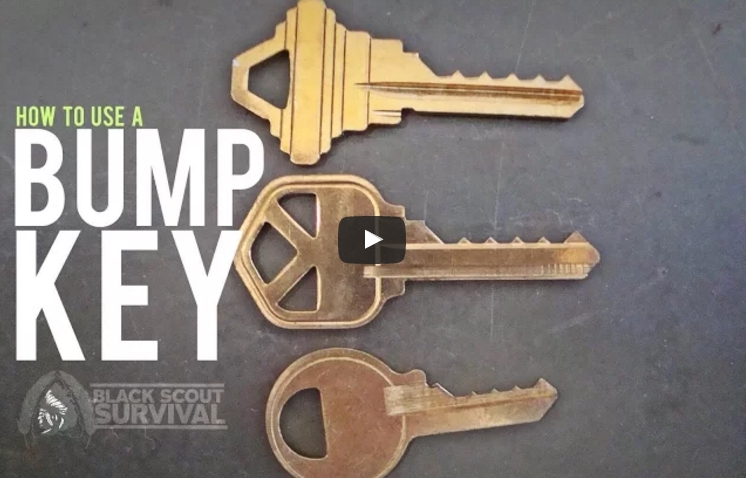How to Make a Bump Key
Bump keys can be made at home with standard household tools. However, it may be challenging to make a bump key correctly with just the use of a file. Moreover, they must be crafted from a key which already fits a given type of lock.
How Bump Keys Work
In order to understand how bump keys work, the first thing to know is how a pin tumbler lock functions. Pin tumbler locks include driver pins and key pins which are placed inside the cylinder and the core respectively. When in a locked position, the driver pins and key pins occupy a single pin hole and a spring that pushes them together to prevent the core from rotating. The pins are supposed to be aligned so as to let the separation in between the driver pin and the key pin to also align with the separation in between the housing and the core so as to create a (shear line) that enables the plug or core rotate in the lock cylinder.
The bump key is cut with wide valleys and low peaks which are designed to ensure that the pins can be properly impacted when under force. Typical bump keys are partially inserted into the lock to ensure that one notch or pin remains between it. Also, with a little movement, the bump key is inserted fully and depends on the pins’ spring tension for alignment. The lock bumper will then apply a “bump” or impact force which will insert the key deep into the lock. This causes the driver pins to jump and the key pins to briefly jar.
When the cut key is inserted correctly into the key-way, it aligns the pins along the shear line. This is by aligning the separation between these pins with the core’s edge. This allows you to rotate the lock core and unlock any kind of bolt-work allowing you to pull the door open. If the wrong key is inserted, the gap in between the pins fails to align with the separation around the core. This prevents the creation of the shear line which in turn prevents rotation of the core. To successfully bump a lock, all you’ll need is a blunt object, a bump key, and a little patience. Understanding the operation of the bump key significantly increases your ability of lock bumping.
Lock Bumping vs. Lock Picking
Despite the fact that lock picks used appropriately cause little or no damage to the well-manufactured locks, the skill, in general, takes plenty of energy and time invested in the practice. Bump keys, however, can be used with minimal practice and the success rate is quite high. The downside: it is often quite easy to figure out that lock bumping techniques have been used to open a lock.
Conclusion
Overall, bump keys are very effective in launching attacks on various modern locks. They are easy to use and do not require much practice or training. Anyone who wants to try lock bumping, but does not want to make their own bump keys is highly encouraged to shop bump key manufacturers to get the right gear to practice the skill. Since bump keys can cause damage to the lock, it is advised to use a lock which is not under use or a clear practice lock for testing.
(Original video)
